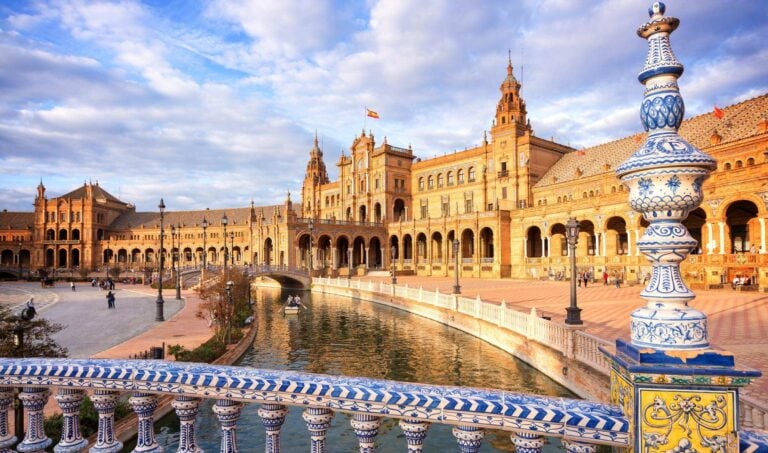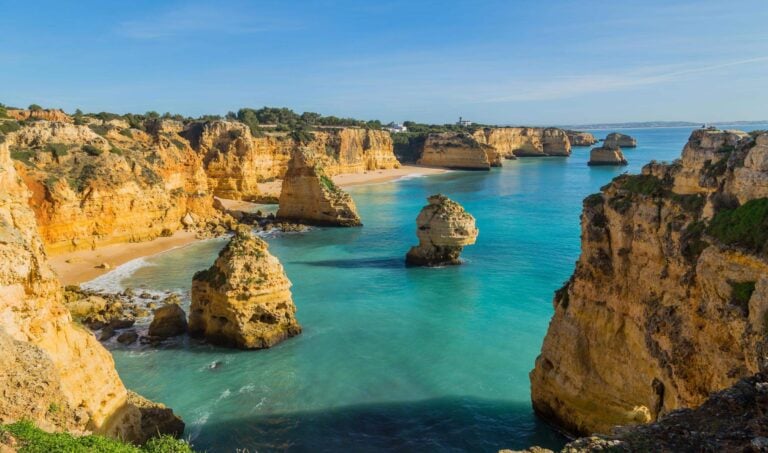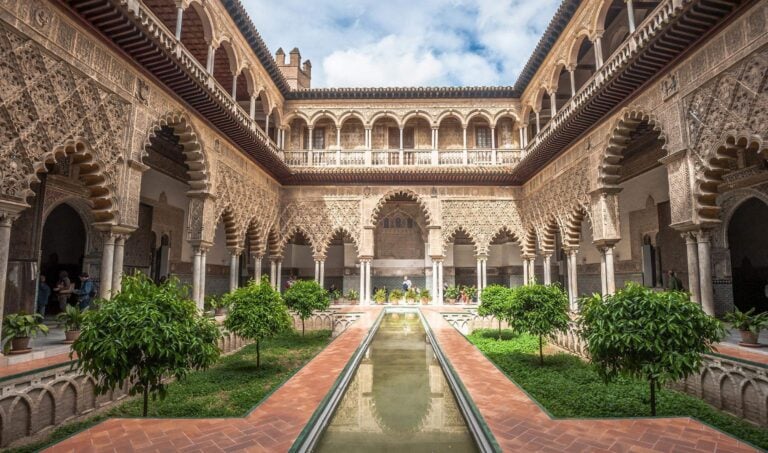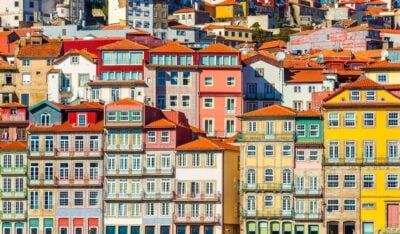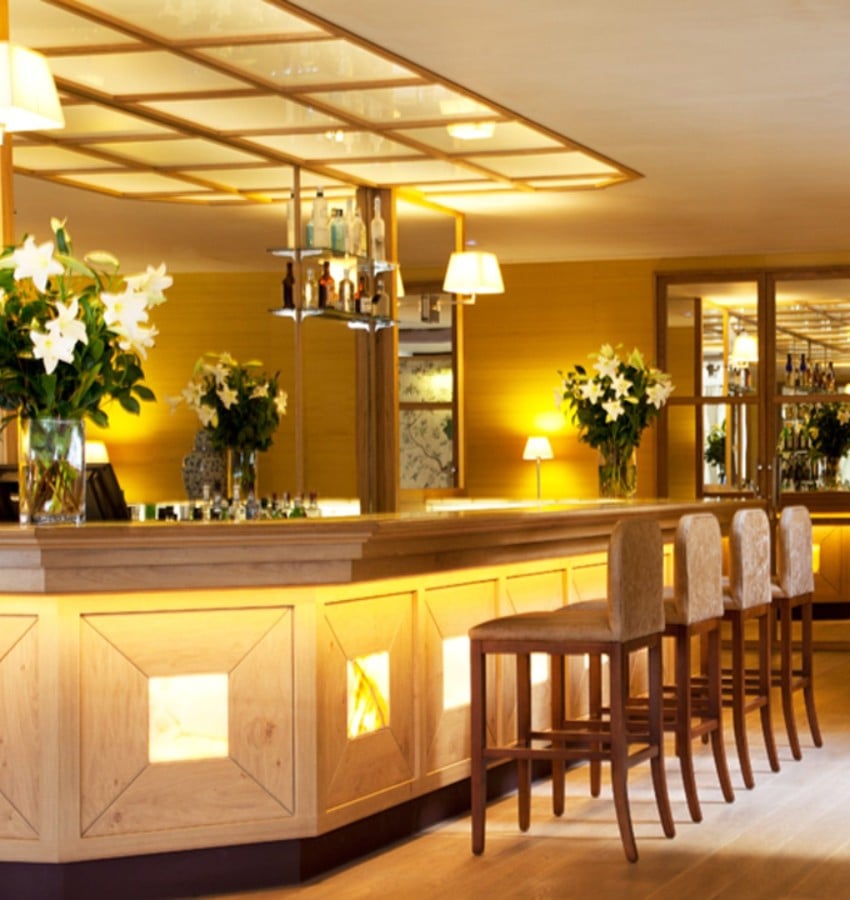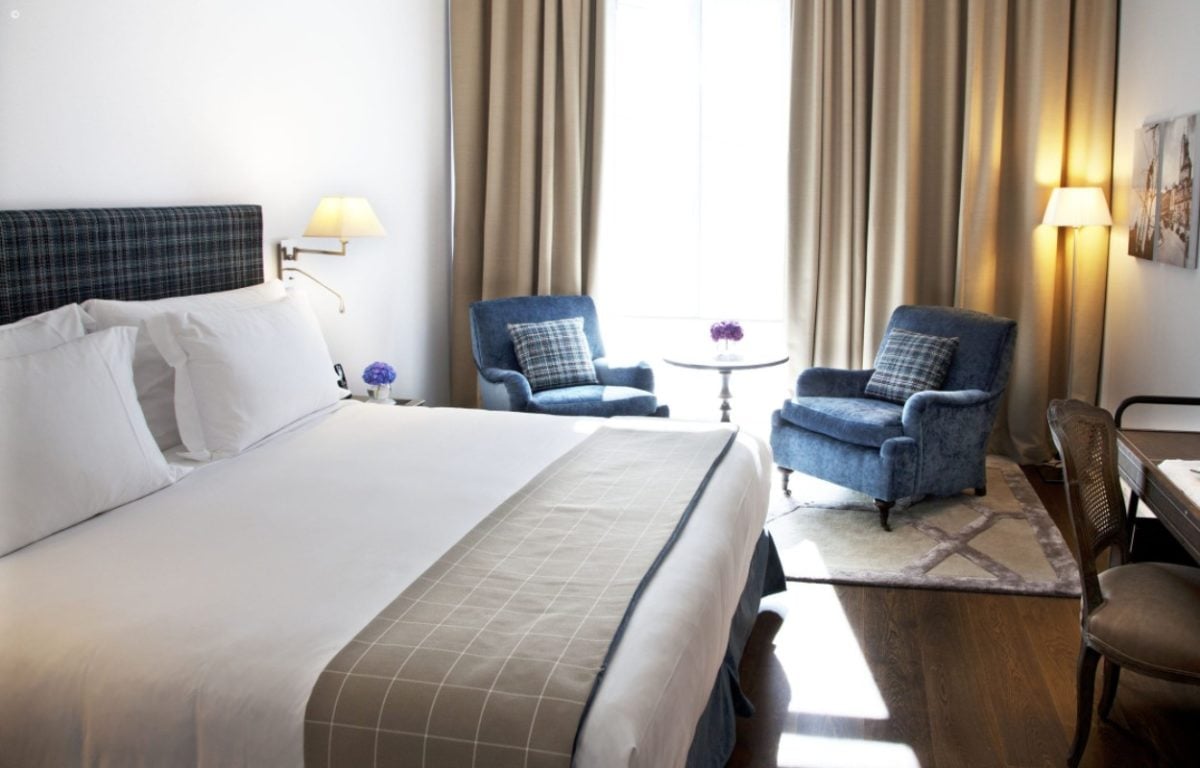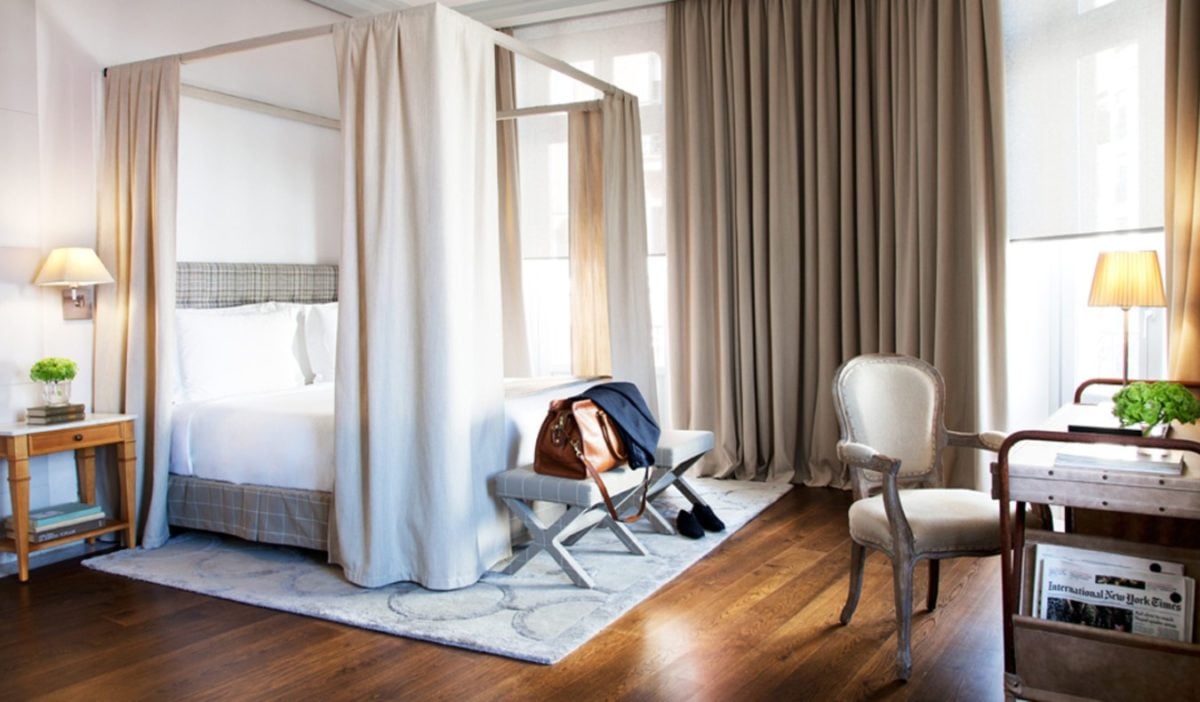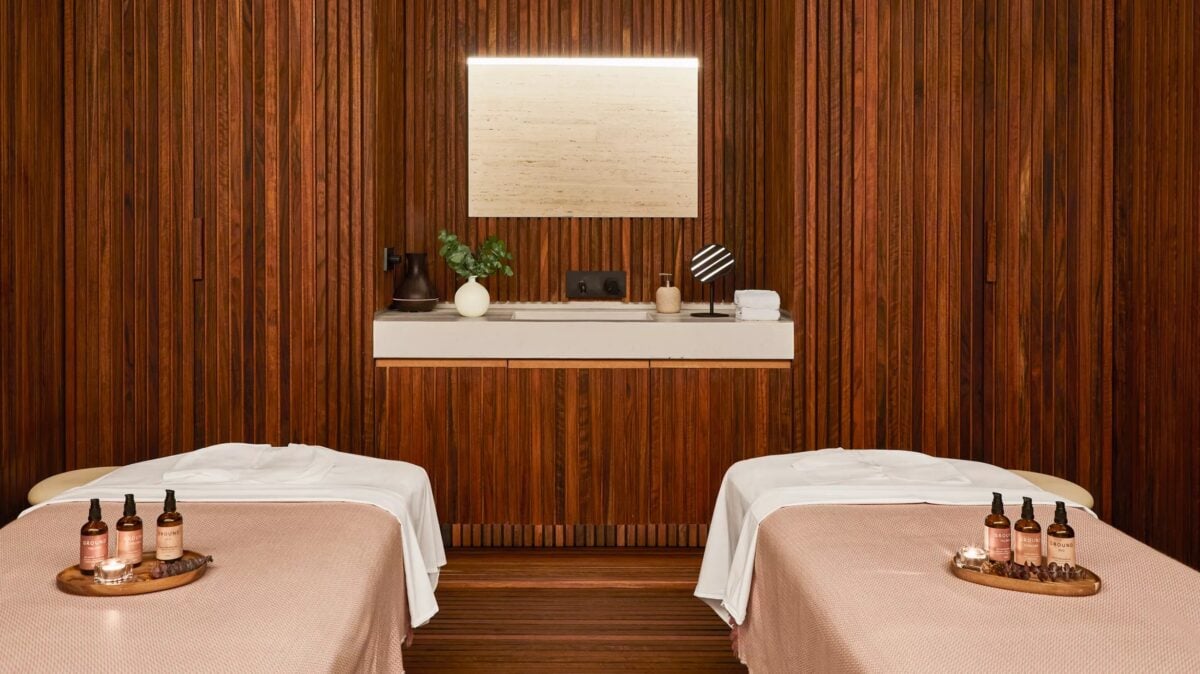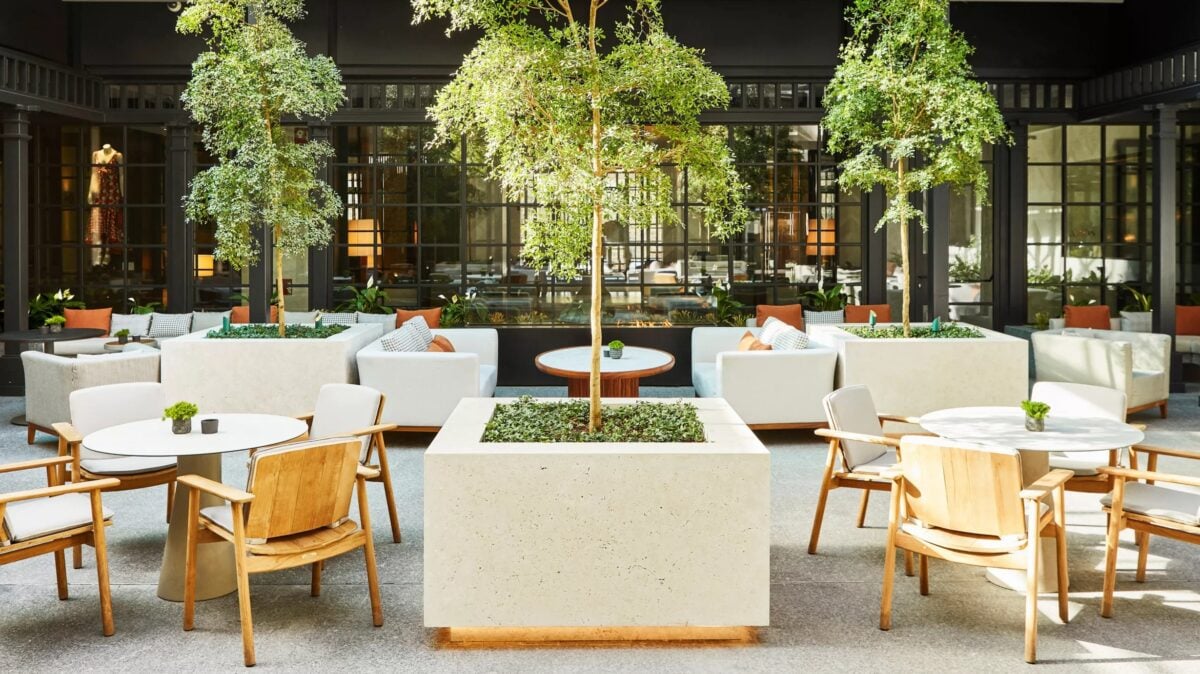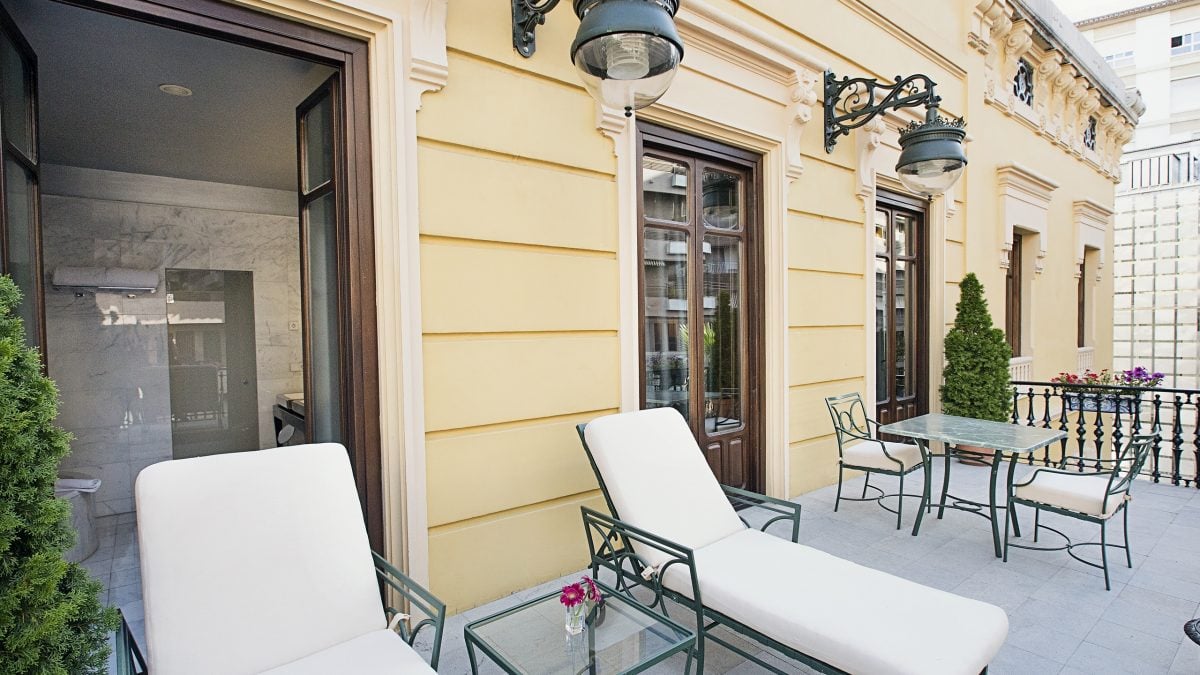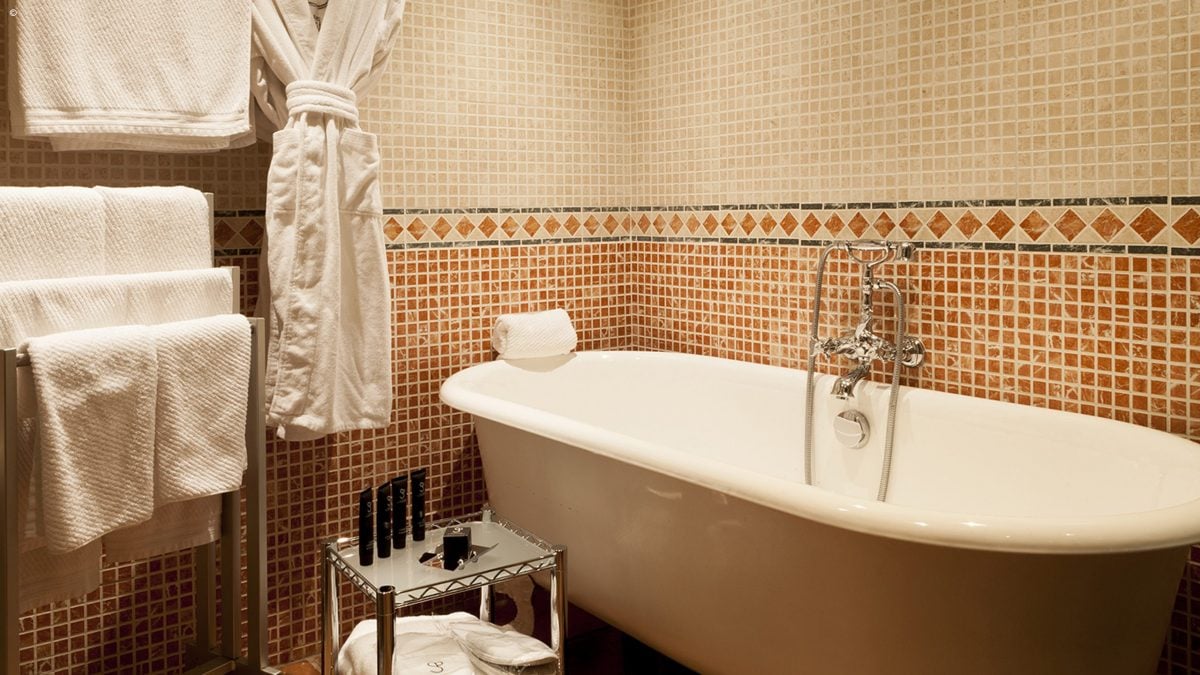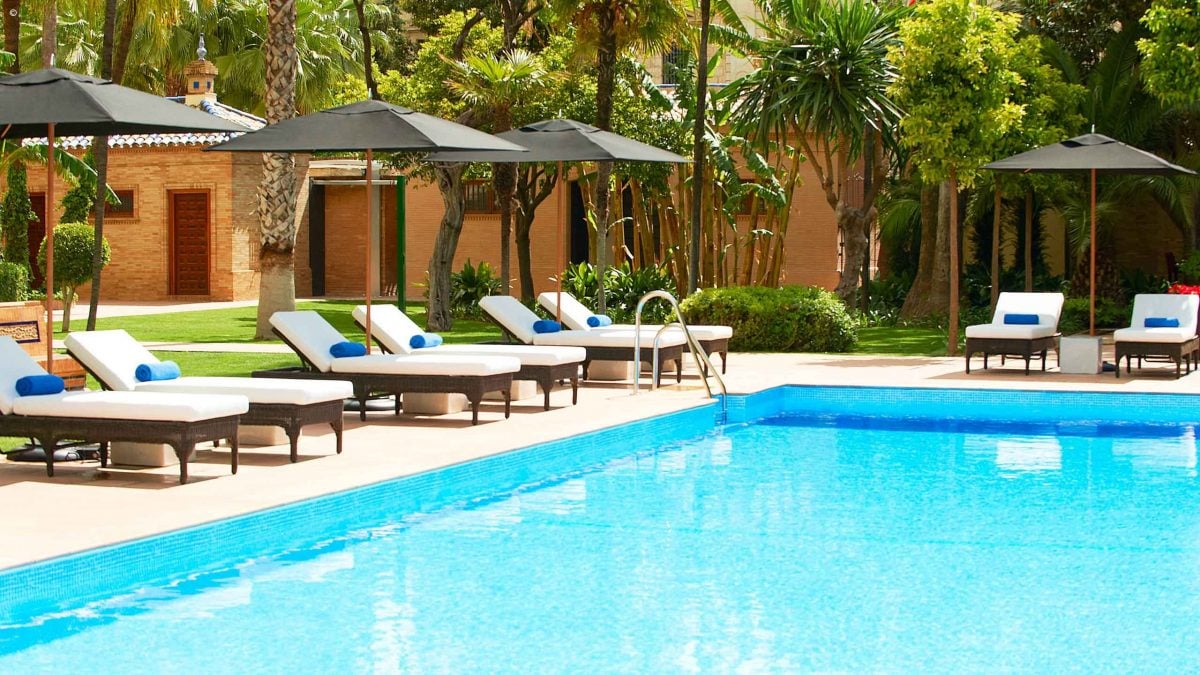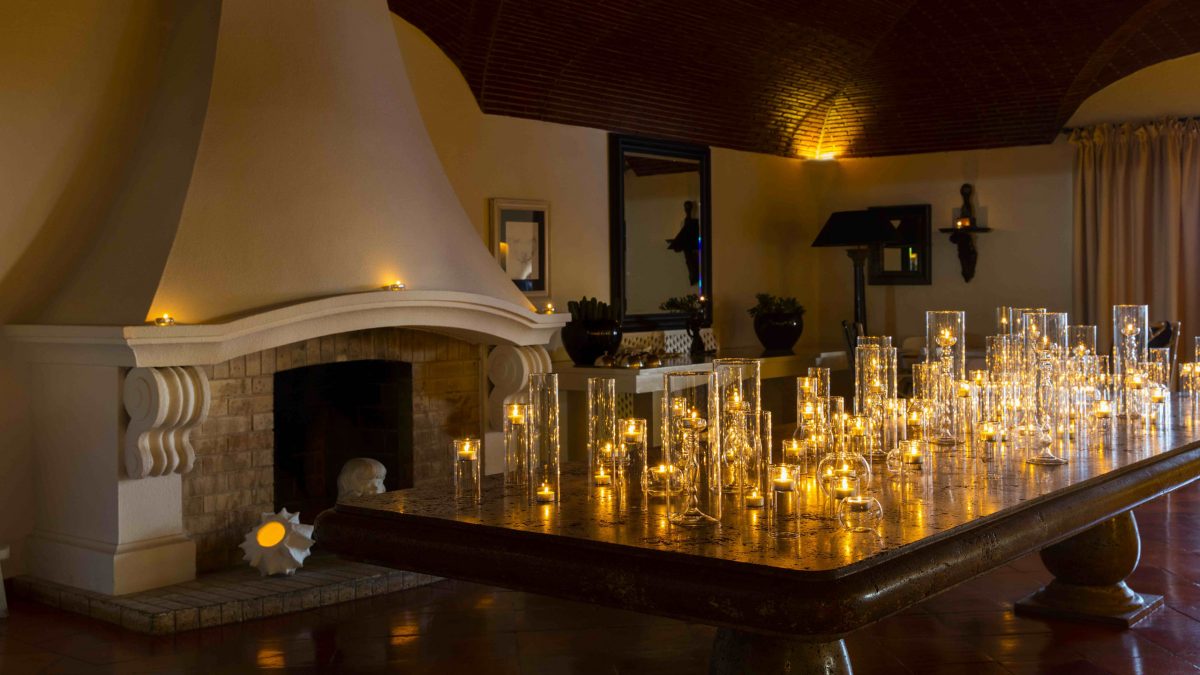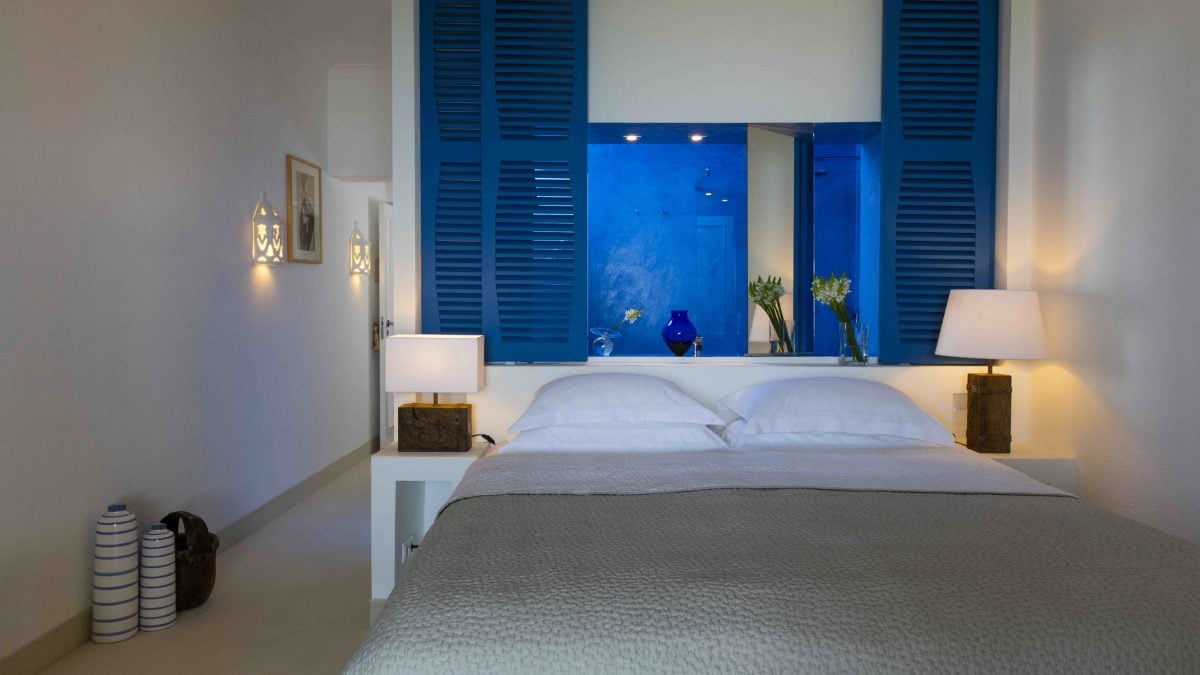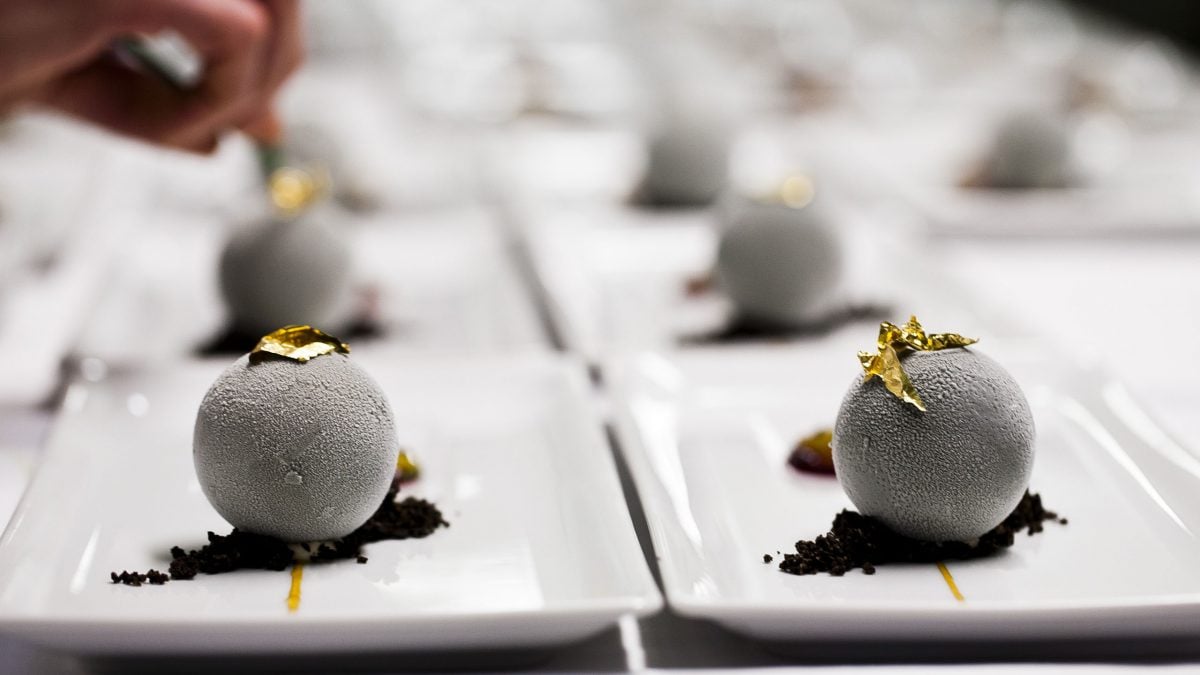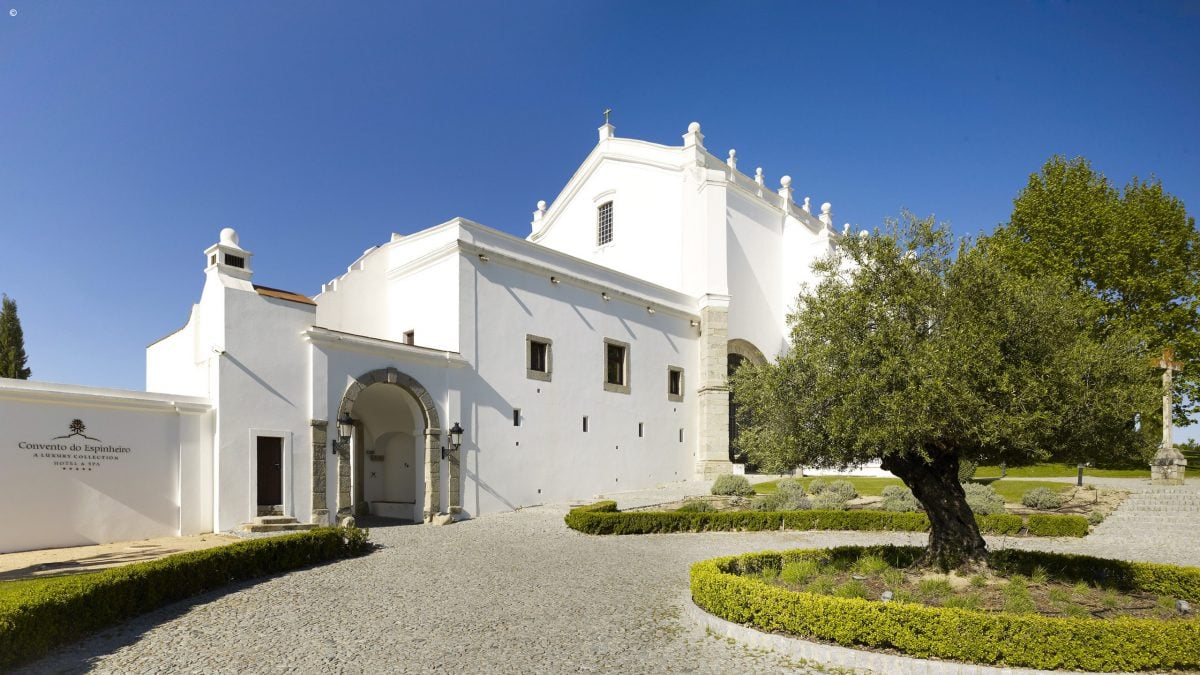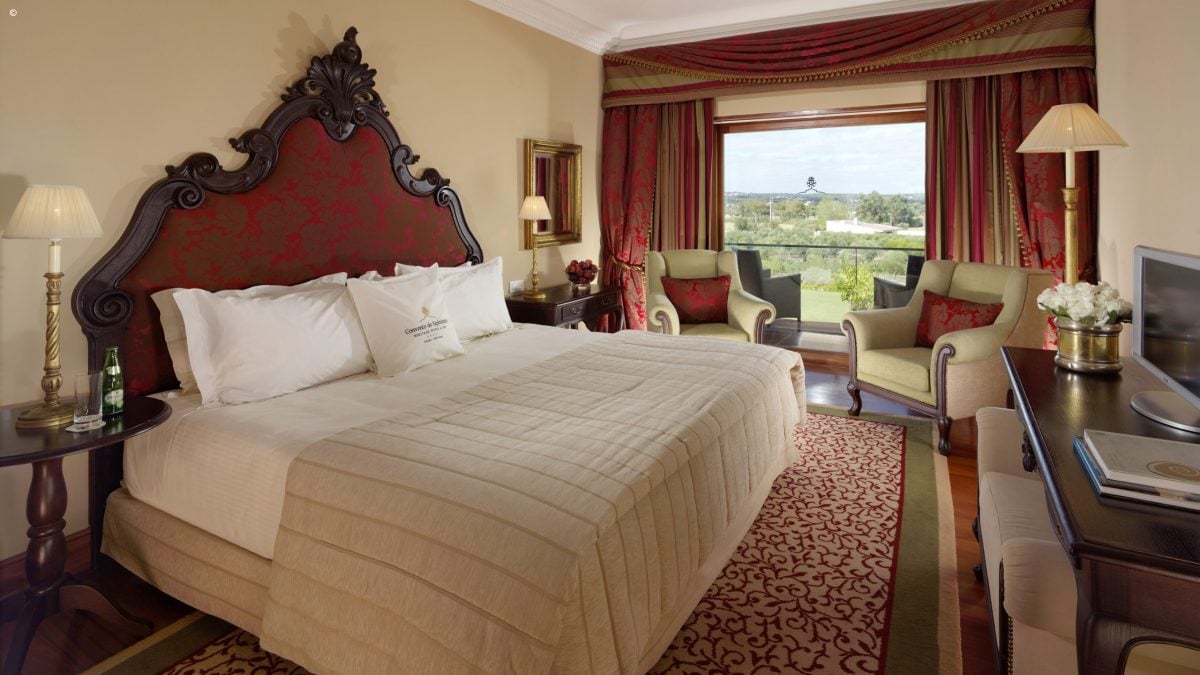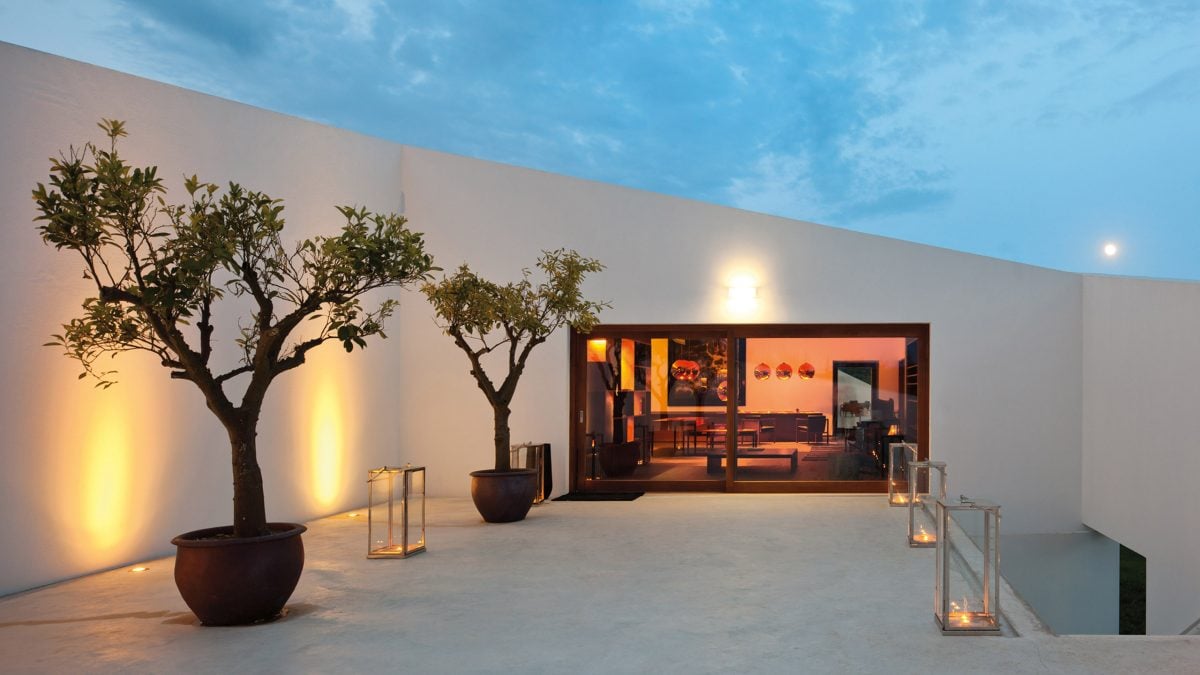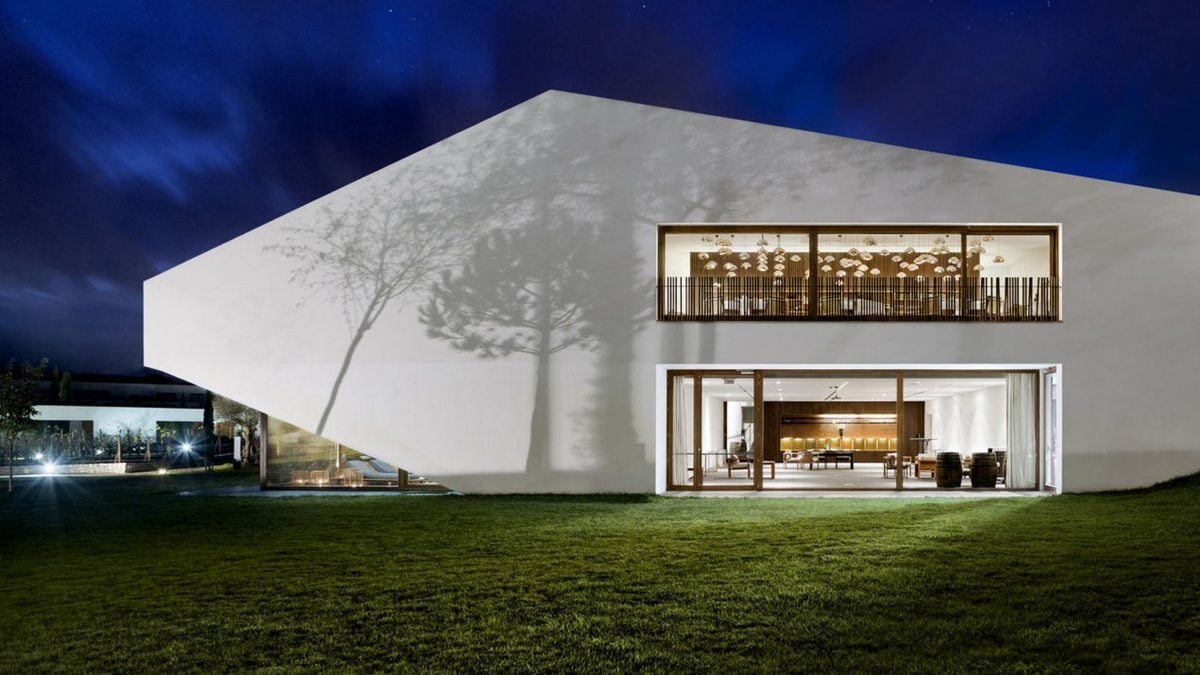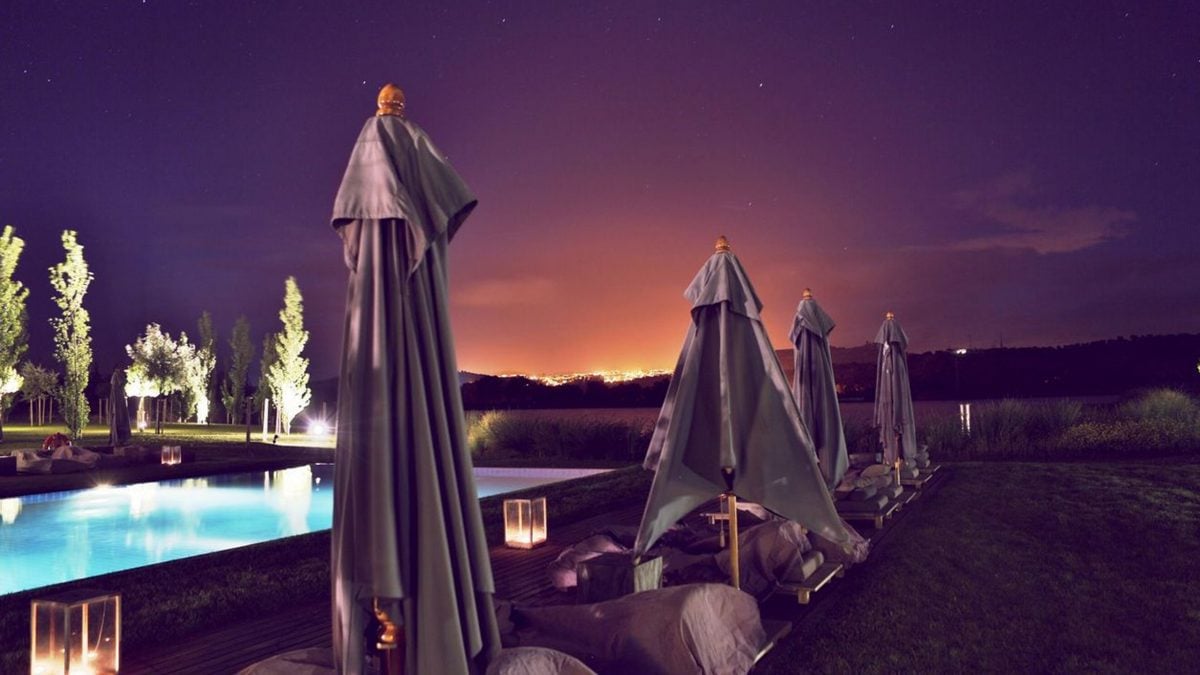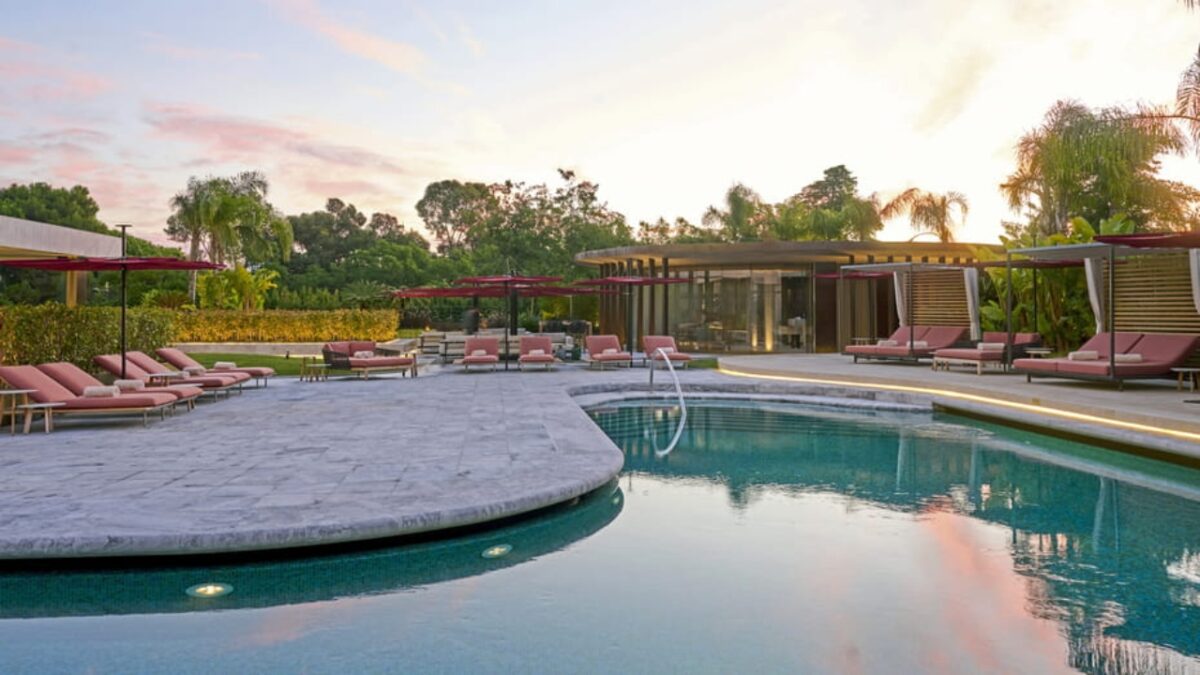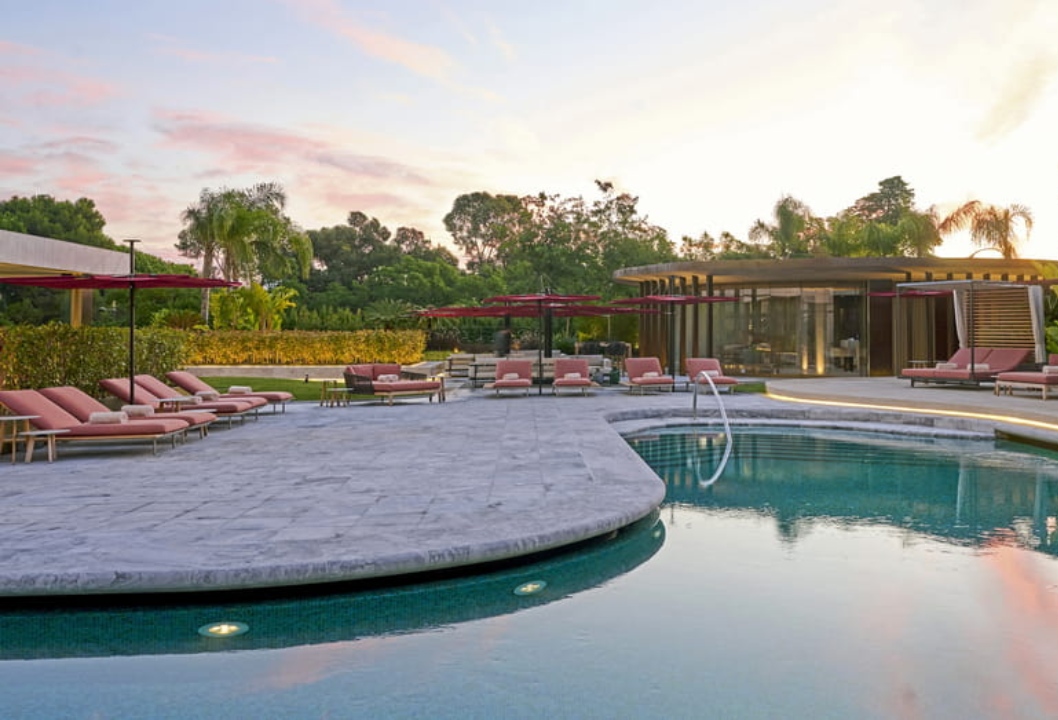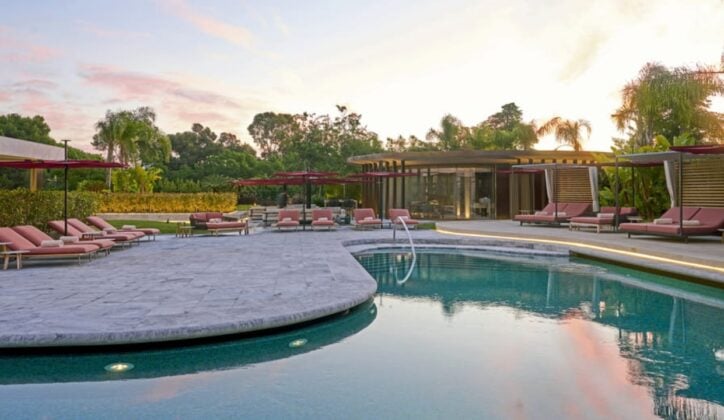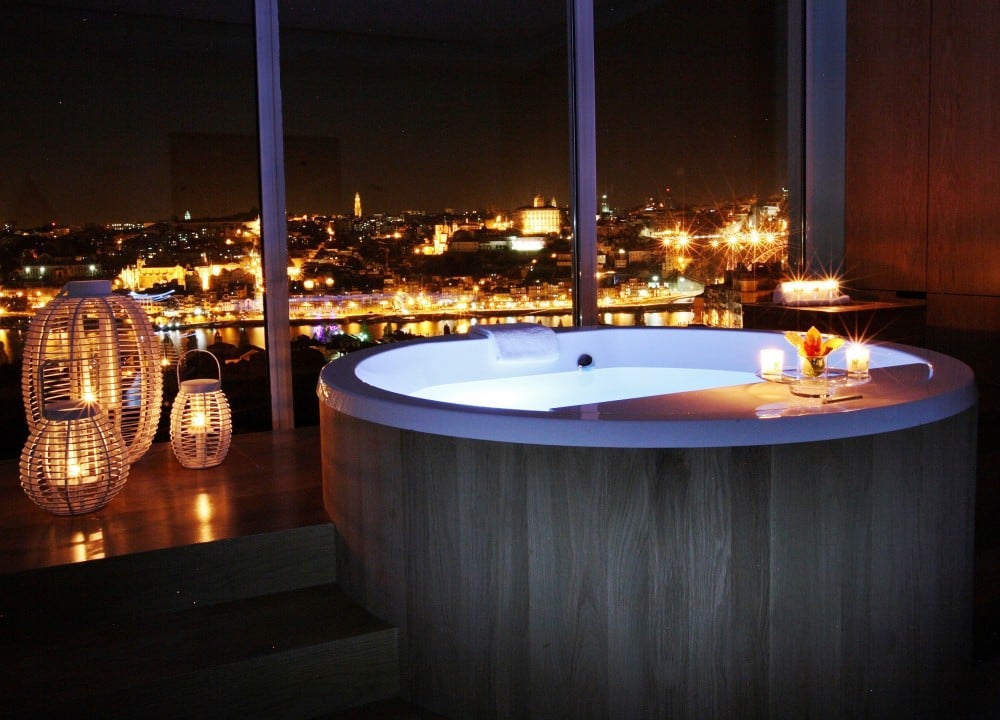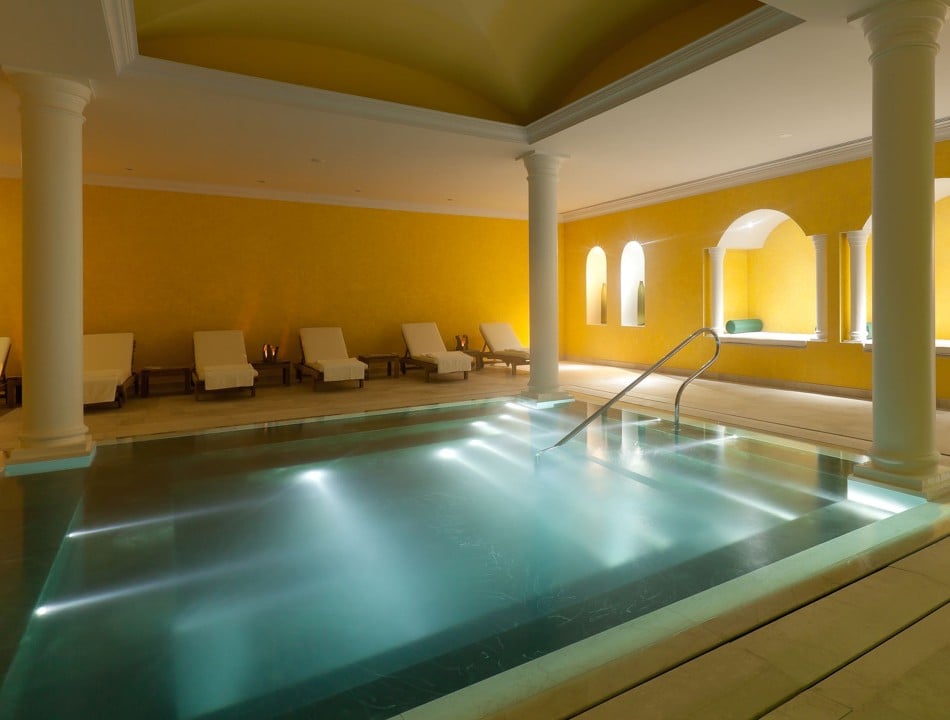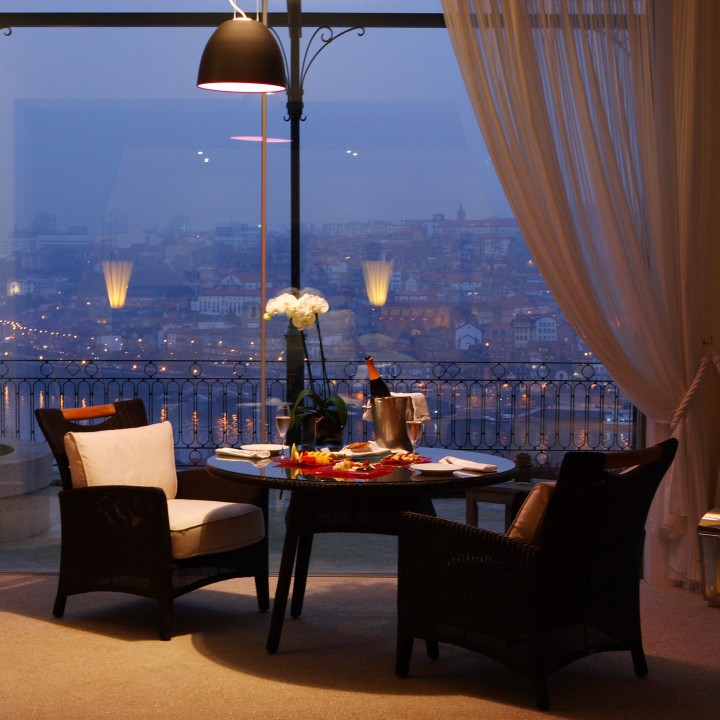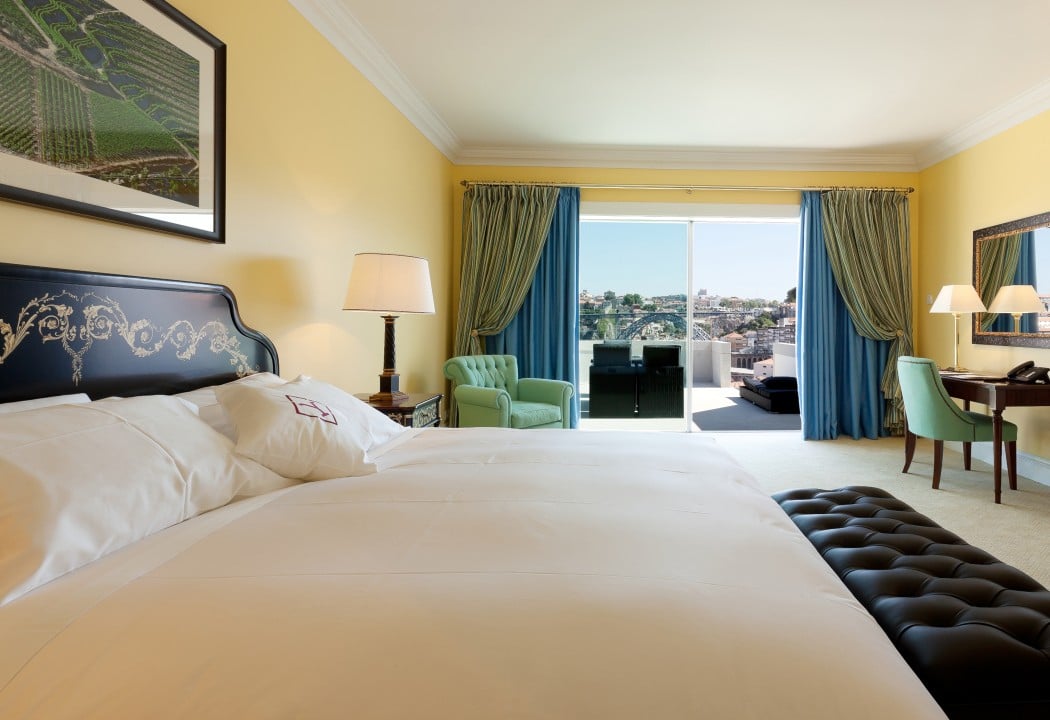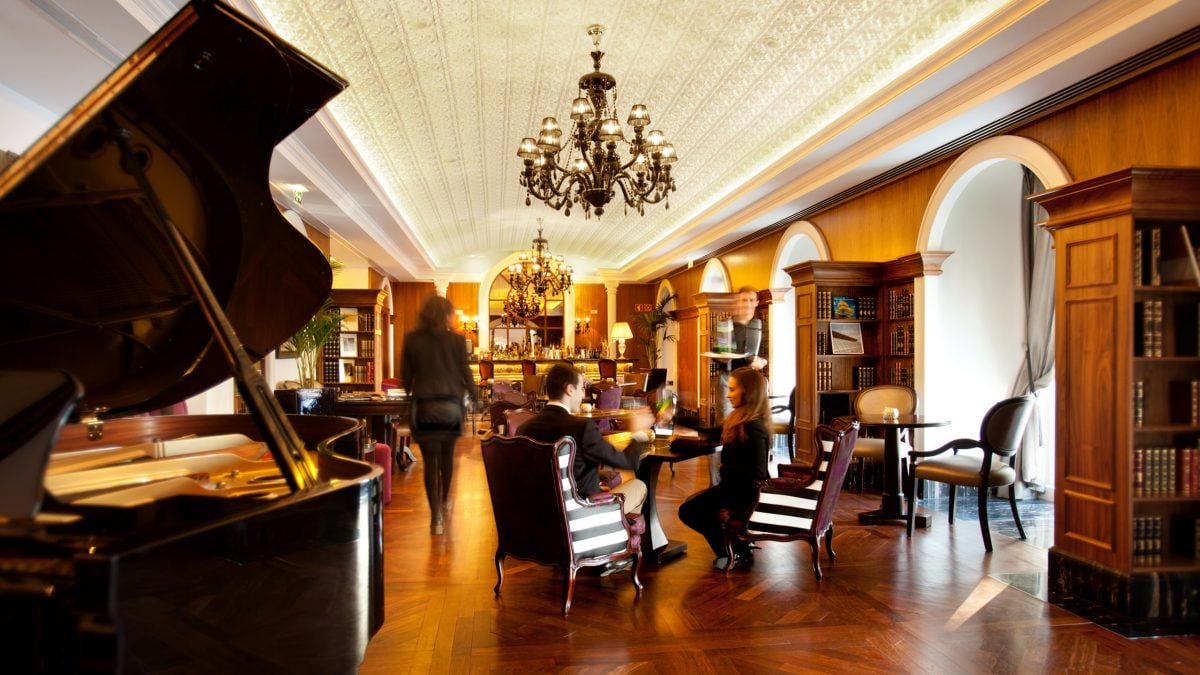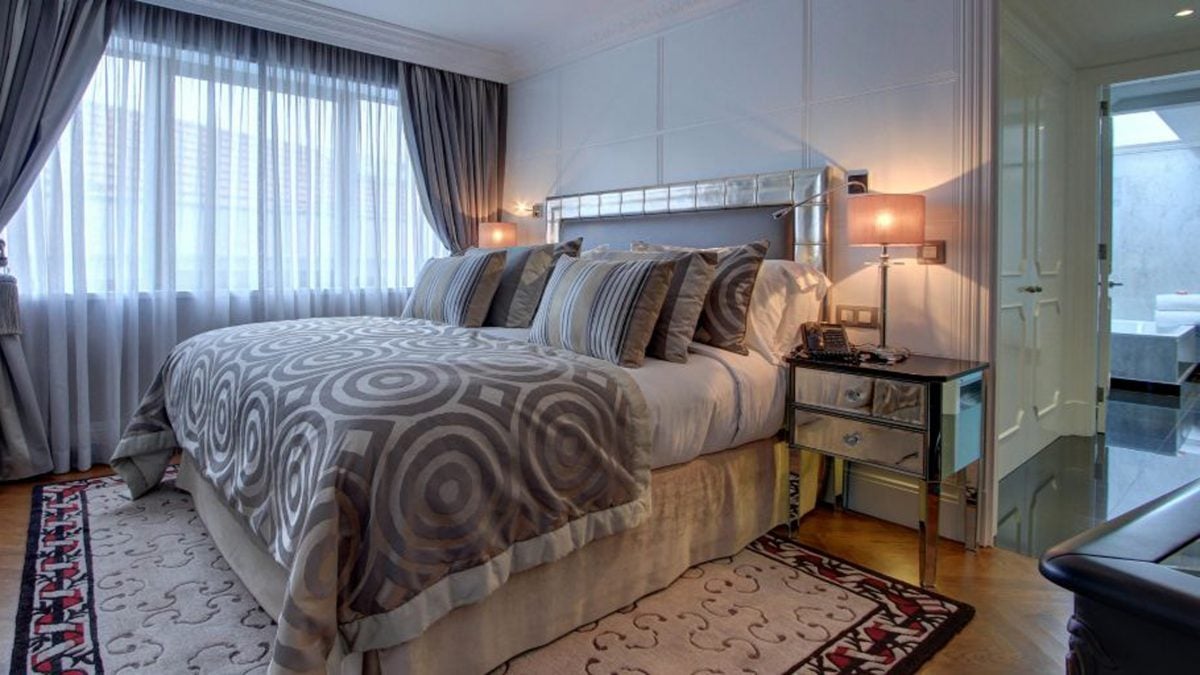A Luxury Trip to Spain and Portugal
Trip highlights
- Enjoy the best of Madrid's delicious tapas scene
- Visit the Prado, one of Europe’s greatest art galleries
- Spend a day in the culture-rich city of Cordoba
- Explore the streets and squares of sunny Seville
- Soak up the sun on a beach in the Algarve
- Enjoy a romantic evening cruise along the Douro
Our bespoke trips include
We design one-of-a-kind journeys incorporating luxury in all its forms. Our bespoke trips include:
- Luxury accommodation throughout
- Privately guided tours
- Private transfers
- Meticulously selected experiences
- Expertise and support from your Jacada Concierge

- Days 1–3 Madrid
- Days 3–5 Granada
- Days 5–8 Seville
- Days 8–10 The Algarve
- Days 10–12 Alentejo
- Days 12–14 Lisbon
- Days 14–16 Porto
- Days 1–3 Madrid
- Days 3–5 Granada
- Days 5–8 Seville
- Days 8–10 The Algarve
- Days 10–12 Alentejo
- Days 12–14 Lisbon
- Days 14–16 Porto
Itinerary in detail
Every Jacada trip is tailored to your personal preferences and interests. Below you’ll find a sample itinerary to inspire your own custom-designed journey.
The marvels of Madrid
Your trip starts with two nights in the Spanish capital Madrid, a city bursting with life and passion. Madrilenos, the city’s inhabitants, really know how to live. As you explore its well-planned streets, you’ll get your first taste of tapas and an introduction to the country from a local historian.
Madrid is a powerhouse of culture. You’ll tour of the Golden Triangle of Art, encompassing the world-famous Prado Museum, one of Europe’s great art galleries, the Reina Sofía Museum and the Thyssen-Bornemisza Museum. Music is also an important feature. The city marches to the beat of flamenco, jazz and live music of all kinds.

Where you could stay
Madrid
Highlights
- 78 rooms and suites
- Spa
- Bar
- Restaurant
Overview
One of Madrid’s newest boutique hotels, set among noble residences and grand embassies, the Hotel Urso has quickly become one of the hottest and trendiest places to lay your head.
Housed in an early 20th-century palace, its neoclassical style gives off an air of sophistication, while its well-appointed interiors are comfortable and stylish.
Its six categories of guest rooms and suites range in size, bed type and views, yet all feature contemporary Scandi-chic-style décor and calming tones.
Wake up to breakfast each morning in the light-filled conservatory, decorated in Oriental-inspired 18th century wallpaper and bamboo plants. When you’re ready to head out and explore, you’ll find sites such as the Madrid History Museum, the National Museum of Romanticism and the vast Retiro Park, located close by.
Wind down after your day in the plush wood-panelled spa, offering a variety of massages and specialised skincare treatments. And when you’re fully relaxed, head to the sleek Urso Bar for cocktails and gourmet Spanish tapas, made from ingredients sourced at the local Mercado de Barceló. The hotel restaurant, ½ Ración, which means ‘half portion’ offers cuisine based on the traditional Madridian food.
→ Find out moreMadrid
Highlights
- Relax in the comfort of one of the 154 rooms or suites
- Enjoy traditional Spanish cuisine at either of the two restaurants
- Sip on a refreshing cocktail at the terrace bar Tarde.O
- Indulge in an exfoliating hamman treatment at the Sense spa
- Explore the wonders of Madrid from this centrally-located hotel
Overview
In the heart of Madrid, along the grand Paseo de la Castellana boulevard, is where you’ll find Rosewood Villa Magna. Long esteemed for hosting discerning travellers, Rosewood Villa Magna has been thoughtfully refurbished to an elevated level of contemporary style that features modern amenities.
Each of the 154 guestrooms and suites are a calm haven amidst the cosmopolitan surroundings of the vibrant Spanish capital. Rosewood Villa Magna’s 101 guestrooms offer a quietly elegant, modern aesthetic that is both soothing and inspiring, whilst the 53 suites offer privacy and vast spaces ideal for families or relaxed romantic escapes. Each suite features a sitting room and large windows to frame sunny vistas and the twinkling city lights. Suites also overlook Castellana Boulevard, the hotel gardens or the city with its pretty boutiques.
Dining options consist Amós Restaurant, where you can indulge on the exceptional produce of Spain’s northern lands, along with Las Brasas de la Castellana Restaurant. Here you can enjoy traditional Spanish cuisine on a terrace that overlooks the elegant gardens. There is also an all day cafe and a terrace bar where you can relax with a drink as the sun dips below the horizon.
Experiences include treating yourself to a massage or a treatment at the Sense spa, or exploring the local neighbourhoods of Madrid.
→ Find out moreSee the city
Tapas
History
Architecture
Architecture

Tapas walking tour
Spain has an incredibly rich culinary history and is famous for its tapas, bite-sized morsels of delicious food usually enjoyed with a glass or wine or beer. You’ll visit some of the city’s best tapas bars and enjoy dining the way Spaniards have for more than two centuries.

Historical and artistic tour
Meet your art historian guide to learn about Madrid’s architectural evolution. Travel through the magnificent eighteenth century neoclassical period, with such masterpieces as the Prado Museum, the Puerta de Alcalá and the Fuente de Cibeles, before visiting the elegant and glamorous Barrio de Salamanca, a showcase of 19th and early 20th century buildings. The tour includes a visit to the Prado Museum itself, home to 9,000 pieces by artists such as Bosch, Titian, El Greco, Rubens, Velasquez, Goya and Madrazo.

Visit the Royal Palace
Madrid’s Royal Palace was the residence of the Kings of Spain from the 18th century to the early 20th century. It was built by order of Philip V on the site of the old Alcázar fortress, a former Moorish castle. The Sabatini and Campo del Moro Gardens are among the Palace’s other attractions, as well as its several different façades. Notable among its numerous rooms are the Royal Guards’ Room, the Columns Room, the Hall of Mirrors and King Charles III’s room.
A stop in charming Cordoba

Cordoba is perhaps Spain’s most elegant city, an historic centre of culture and lasting testament to a golden age of religious tolerance during its time as a caliphate. King Ferdinand III then claimed the city for Castile during the Spanish Reconquista, bequeathing it its gothic and renaissance finery. Visit today, and you’ll find Cordoba’s grand past beautifully reflected in the city’s magnificent architecture. During your tour, explore the Moorish, Jewish and Christian quarters including the Alcazar with its beautiful gardens. You’ll also discover Roman remains and the famous Mezquita Mosque-Cathedral.
Two nights in glorious Granada
Taking the train south to the brooding city of Granada you’ll discover the mountainous region of Andalusia, ruled by the Moors from the 8th–15th centuries. The Sierra Nevada mountains are the Iberian Peninsula’s highest massif and are renowned as the Moors last stronghold before they were driven out of Western Europe.
They left behind an incredible architectural legacy. Granada’s hilly old streets are overlooked by the lavish Alhambra palace and Generalife Gardens, perhaps the finest example of Moorish design.

Where you could stay
Granada
Overview
Granada is a city steeped in history, but this hasn’t stopped it embracing modern Spanish culture with aplomb. The blend of old and new is what makes a stay at the Hospes Palacio de los Patos so special.
The hotel is split across two buildings, one a renovated 19th century palace and the other a striking modern construction. The interior is bright and airy, and rooms in the older part of the hotel contain beautiful features such as plasterwork ceilings, Doric columns and friezes.
After a day of exploring, you’ll relish the opportunity to relax and unwind in the spa which features Turkish baths, a sauna and thermal pool. Sightseeing can build up quite the appetite so enjoy some traditional Spanish tapas or dishes inspired by the city’s Moorish past in the hotel’s restaurant.
No trip to Granada would be complete without visiting the majestic Alhambra, a series of palaces and gardens built under the Nazari Dynasty in the 14th century. Be sure to also stop by the Granada Cathedral and the Alcazaba, a wonderfully preserved Moorish fortress.
→ Find out moreGranada
Overview
Granada is a city with more than its fair share of beautiful buildings and stunning architecture. The luxurious AC Palacio de Santa Paula occupies the former Santa Paula Convent which has been lovingly restored to offer guests a relaxing retreat bursting with character.
The hotel is centred around a beautiful courtyard with elegant stone arches and palm trees, the delicate tinkling of the fountain in the background. It also houses the tombs of the nuns from the convent. Admire it from the wraparound balcony on the first floor, complete with 16th century frescos, or sink into one of the chairs and enjoy it illuminated at night.
Fusing old and new, the hotel has managed to retain its charm and authenticity while allowing guests to enjoy all the comforts of a modern hotel. There are 75 rooms and suites, some with exposed brick walls and views over the courtyard.
The restaurant occupies the former convent library and the menu makes for good reading, fusing traditional Andalusian flavours with more modern culinary concepts. The courtyard is the perfect setting for a glass of wine and nibbles.
You’re ideally situated on the Gran Via de Colon, one of the main avenues in Granada’s old quarter. The cathedral and archeological museum are on your doorstep and the majestic Alhambra is within walking distance.
→ Find out moreExploring Granada and surrounds

The Alhambra
The lavish Alhambra is Granada’s most visited site. Once a palace and fortress for the city’s Muslim rulers, the Alhambra means ‘red fort’ and is named after the red clay used in its construction in the mid-13th century. The Generalife was the country residence of the Nasrid king and the recreational courtyard and its beautiful gardens sit on the slopes of the Cerro del Sol, offering spectacular views.
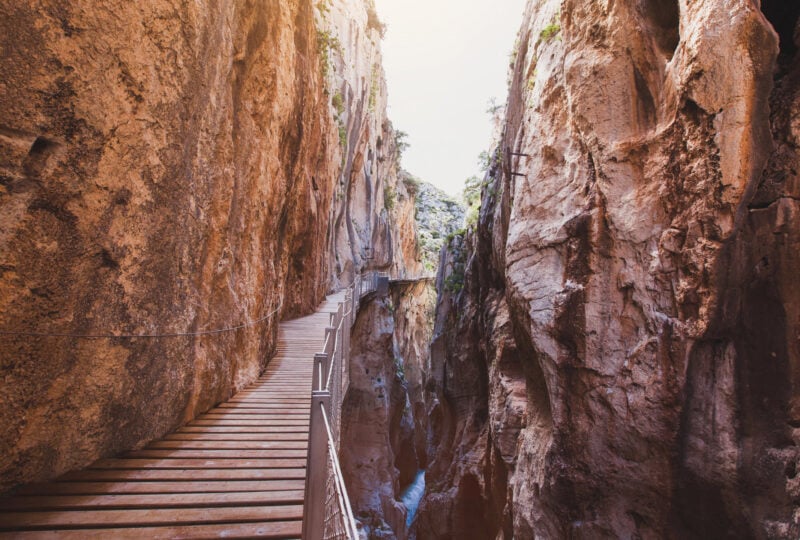
El Caminito del Rey
If you’re feeling adventurous, spend an afternoon walking El Caminito del Rey, a path following a canyon carved by the river Guadalhorce. It’s commonly known as El Caminito del Rey because it was first opened by King Alfonso XIII in 1921 in celebration of the inauguration of the nearby dam. The walkway is three feet wide, rising one hundred metres above the river below, and is not for the faint-of-heart. Trekking the whole path takes about three hours, a fantastic opportunity to take in the surrounding nature and crimson cliffs.
Soak up the atmosphere in Seville
The jewel in the Moorish Caliphate of Cordoba and the capital of the most powerful Castilian Kingdom, sunny Seville has been left with eye-popping architecture and majestic grace. While Seville reached its peak in the 17th century and then suffered terribly in the Spanish Civil War, today it has resurrected itself as the capital and largest city of Andalusia.
You’ll spend three nights here to experience the true essence of Spanish grandeur.
The old centre is dominated by the towering mosque turned awe-inspiring cathedral – one of the largest in Europe – the beautiful Alcázar palace complex and the General Archive of the Indies, once the centre of the Spanish Empire. From here, narrow streets and buzzing squares brimming with century-old bars, restaurants and shops make it a great city for long nights out alongside the locals. You’ll also attend an evening of flamenco and a hands-on cooking class.

Where you could stay
Seville
Overview
Steeped in history, the Hotel Alfonso XIII was constructed by order of the King as luxury lodging for the international VIPs attending the 1929 Ibero-American Exposition.
This grand structure quickly became an emblem of the city centre and has been continuously used as a hotel until the present day, although Franco’s regime necessitated a name change to the Andalusian Palace while under his rule. To this day, you’ll find that it is the city centre’s only true, luxury property.
Typically Andalusian in style, the hotel expresses the region’s mixed Moorish and Castilian founding influences with authentic and detailed features. Each of its 151 bedrooms including its 19 suites are unique in design, falling into three style categories: Andalusian, Moorish, and Castilian.
Alongside its exalted, majestic architecture, Hotel Alfonso XIII is also notable for its large pool, which sits amidst lush gardens. This makes it a rare urban sanctuary and one of the only locations where being in Seville during the heat of high summer will be thoroughly enjoyable.
By the pool you’ll find an al fresco restaurant that turns itself into a twinkling vision after dark and serves Spanish and international delicacies. You can also eat in the sumptuously-tiled gallery surrounding an arched interior courtyard where you can take your breakfast and coffee. If you fancy something truly epicurean, the atmospheric Ena tapas bar is manned by Michelin-starred chef Carles Abellán of Barcelona. Afterwards, discuss the highlights of your meal to the accompaniment of live piano music at Bar Americano.
In terms of location, you’ll find that you really couldn’t be better placed to discover Seville. Hotel Alfonso XIII sits right on the edge of the old – pedestrianised – quarter, meaning that you can benefit from arriving to the hotel by car and walking five minutes to outstanding historic sites such as the Cathedral de Seville, the Alcazar, Puente de S. Telmo, and Plaza de Espana.
→ Find out moreMake it mine
Exploring
Dancing
Cooking
Cooking

Seville by bike
Meet an expert resident guide an take to two wheels, exploring the beautiful city of Seville at a leisurely pace. Cycle along its pretty streets and over the bridge, passing by the Golden Tower and through parks while your host brings the city to life with fascinating stories and intriguing anecdotes.

A thrilling flamenco show
Flamenco is the traditional song and dance of Andalusia and was developed over hundreds of years before becoming popular in the 19th century as a form of café entertainment. There are three parts to every flamenco show: ‘grande’ or ‘hondo’ with intense, profound songs; ‘intermedio’; and finally ‘pequeño’, lighthearted songs about love and nature.

A hands-on Andalusian cooking class
Meet your host, Amelia Gomez, before beginning this hands on class where you will cook and taste some of the most famous dishes of Andalusian cuisine. Enjoy the traditional salmorejo, beetroot and avocado cream and Spanish omelette or fried aubergine with honey. You will learn how to prepare Paella with saffron, vegetables and chicken or seafood.
Relax on the Portuguese coast
Continue westward into Portugal for a couple of days relaxing on the sands of the Algarve. Sitting right at the foot of the country, the Algarve is one of Portugal’s most popular coastal destinations and home to some of its loveliest beaches. West of Faro you’ll find golden sands and hidden coves, with the coastline getting wilder the further west you head. This is the perfect place to unwind and enjoy life by the sea.
You’ll stay at a beautiful little resort with a restaurant overseen by the country’s most highly decorated chefs.

Where you could stay
Algarve
Overview
Perched above the blue Atlantic and surrounded by evergreen gardens and fronted by a beautiful stretch of sandy beach, Vila Joya is striking family-run boutique resort.
There are just 22 rooms and expansive suites, each unique and with direct sea views, and casual, luxurious interiors of light, warm tones, natural materials and fine examples of Portuguese craftsmanship. Each room also includes a terrace or balcony, some with direct access to the garden.
At lunchtime and dinnertime, the terrace becomes a dining space under Dieter Koschina, patron at Vila Joya for over 25 years, winning two Michelin stars and becoming one of Portugal’s most highly decorated chefs. Fine dining is central to the Vila Joya experience and indeed the reason many people stay here again and again. There are also lighter bites at the Pool Restaurant. Indulgence continues at the fabulous spa which focuses on water, air and light.
→ Find out morePeace and quiet in Alentejo
Covering almost a third of the country, rural Alentejo is a vast region of cork plantations, wheat fields, vineyards and clusters of historic hilltop towns. Its name means beyond the Tajo, and it stretches south from the River Tajo to the northern mountain ranges of the Algarve.
Alentejo is littered with Roman ruins, crumbling Moorish castles, marble towns and whitewashed villages. You’ll also find beautiful Gothic, Renaissance, Baroque and Neoclassical architecture in the UNESCO ‘museum city’ of Évora.
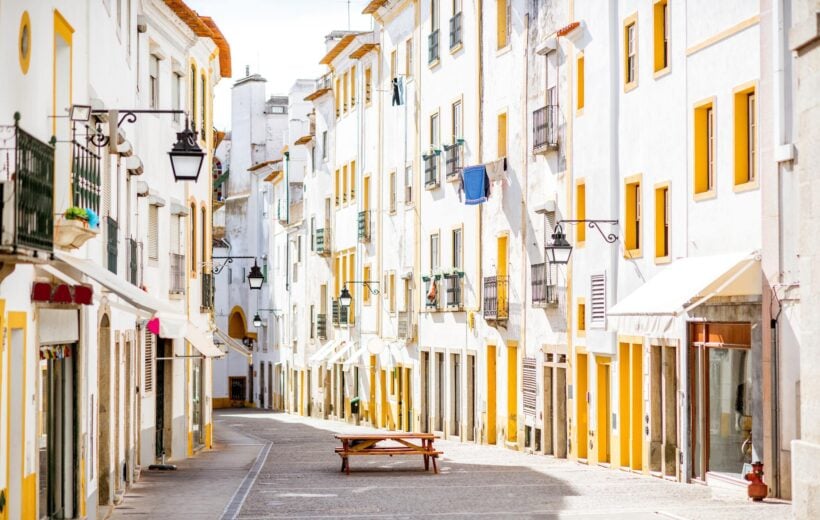
Where you could stay
Alentejo
Overview
A short drive from the centre of Evora, Convento do Espinheiro is a historic hotel located within a 15th-century convent.
The chapel, cloisters, and extensive grounds create a wonderfully peaceful atmosphere and 92 rooms can be found in both the old building and modern annex.
Divinus Restaurant is located within the ancient wine cellar, and the high vaulted ceilings and flagstone floors really give the feeling of stepping back in times. In the summer, the courtyard, surrounded by Moorish arches, becomes another dining space provides the perfect place to dine while enjoying the sunshine. The bar is located in the former convent kitchen and the water deposit is now a wine bar where expert sommeliers will introduce you to the wines of the region.
The Diana Spa is named after the Roman temple of Diana in Evora, and features an indoor pool, treatment rooms, Turkish baths and sauna. There is also an outdoor pool, gym and tennis courts for those who like to keep active.
→ Find out moreAlentejo
Overview
This exclusive retreat, set in the heart of Alentejo, effortlessly integrates modern architecture into nature. The interiors are designed by Marcio Kogan and feature artworks by Michael Biberstein.
The 22 suites offer you a place to relax surrounded by luxury and the tranquillity and beauty of nature. For a truly stellar romantic experience, choose to sleep beneath the stars in one of the sky suites.
Dine at the Michelin-starred restaurant and go on a gastronomic journey with Miguel Laffan. The menu features Portuguese flavours and ingredients.
Enjoy the outdoors and take a leisurely stroll through the estate’s vineyards, do a wine tasting, or take a tour of the other wine farms in the region.
Find renewal at the Caudalie spa where the treatments carry through the vineyard theme with grape-based products. There are also yoga and meditation sessions on offer, as well as individually designed detox programmes.
→ Find out moreYour private guided tour of Evora

Start in the main square Praça do Giraldo, where you can see the 16th Century St. Anton’s Church and the Henriquina Fountain. The Gothic and Manueline architecturally influenced Church of St. Francis is a pearl of its own with its golden altars, as well as the Capela dos Ossos – the Chapel of Bones – the entire room covered with human bones and skulls built by Franciscan monks. Évora’s Cathedral is by far the most dominating site in the whole town and the largest cathedral in Portugal. Inside, you may enter the Chapel of Nossa Senhora da Piedade (also known as Chapel of Esporão), and observe the fine decoration representative of the Renaissance movement.
Two nights exploring Lisbon
Europe’s second oldest capital, Lisbon is an effortlessly elegant city, full of old-world charm. Winding your way through the streets, you’ll pass rows of houses in warm shades of orange, yellow and rust red. Washing is strung from wrought iron balconies and window boxes overflow with flowers. Weaving their way through this pretty patchwork are the city’s trams: a great way to hop between the different districts.
Lisbon has plenty to offer, with a plethora of museums and galleries as well as beautiful buildings covered in iconic azelujo tiles. The city is built on seven hills, each one offering spectacular views over the city and the River Tajo. It is also known for its lively restaurant scene. There are plenty of places to stop, sip a coffee and savour a Portuguese custard tart while watching the world go by

Where you could stay
Lisbon
Highlights
- 4 restaurants and lounges
- In room dining options
- 2 swimming pools (outdoor and indoor)
- Spa
- Fitness centre
- Rooftop running track
- Pilates studio
Overview
Located in the heart of the Lisbon, at the top of one of the city’s famous seven hills, the Four Seasons Hotel Ritz offers spectacular views across the city and river.
282 rooms and suites are beautifully decorated with 18th-century style furnishings as well as tapestries, painting and sculptures by contemporary Portuguese artists. Most rooms come with a private balcony overlooking the hotel gardens, Eduardo VII Park or the River Tajo so you can enjoy bird’s-eye-views and wonderful sunsets over the city’s rooftops.
One of Lisbon‘s gastronomic gems, the Verandah restaurant serves fresher-than-fresh seafood caught from the nearby Atlantic Ocean and boasts an impressive wine cellar. For those with a keen interest in cooking, the hotel can arrange tastings, visits to the fish market and cooking classes. There is a also a sushi bar for fresh, healthy bites.
Named after the famous Portuguese artist, Jose Almada Negreiros, the hotel lounge is a favourite haunt for guests and locals alike. The centrepiece of the Ritz bar is Pedro Leitao’s piano, which has been signed by world-famous artists. Take a seat under one of the hand-made Centauros tapestries or head out onto the terrace to drink in the views.
There is a spa featuring an indoor pool and treatment rooms for when you want to completely unwind, as well as a rooftop fitness centre and running track for those who like an active start to their day.
There are 60 pieces of art throughout the hotel and privatley guided tours can be arranged for guests to learn more about them and their history.
→ Find out moreHighlights of Lisbon
In the city
Out of the city

Lisbon city tour
Go back through the centuries to the time of the Phoenicians, Greeks, Carthaginians, Romans, Moors and finally the Portuguese on this enthralling city tour. You’ll visit the Castle of Saint Jorge, the Alfama, Lisbon’s oldest quarter, and Belem – as well as the Baixa and Chiado neighborhoods. Along the way you’ll learn about Portuguese maritime exploration in the 15th and 16th centuries, the Age of Discoveries and Golden Era of Portugal that transformed Lisbon into the opulent center of a vast empire.

Sintra, Cascais and Estoril tour
Start in Sintra where hundreds of years of history and culture await, including the 19th-century Pena Palace, an incredible combination of architectural styles, colors and shapes, in the Sintra hills. It’s the greatest expression of 19th-century romanticism in Portugal. Cascais is a coastal town, once a small fishing village, that became popular with artists and writers thanks to its idyllic scenery. You will also have time to explore the town of Estoril.
Bring your trip to a close in Porto
Porto, Portugal’s second city, is one of Europe’s most charming. Its jumble of colourful medieval houses are built on a steep riverbank, hugging the calm waters of the Douro River where wooden boats bob on the surface and people spill out of its cafes and bars.
You’ll spend two nights here, ending your trip with a romantic evening boat cruise along the Douro, a glass of the valley’s celebrated vinicultural produce in hand.

Where you could stay
Porto
Highlights
- 109 rooms and suites
- Rooftop swimming pool
- Spa
- Two gourmet restaurants
Overview
This hotel was the family home of the Yeatmans, the British owners of a large port business. A hillside position on the banks of the River Douro in the heart of Vila Nova de Gaia and next to ancient port houses puts the hotel in a prime position for epic views and interesting activities.
The decor is classic and elegant, in keeping with the family’s heritage. The 109 rooms and suites feature antique artefacts and pictures from different Portuguese wine producers, opening out onto private balconies overlooking the river and the city’s historic centre. Be immersed in the city’s culture in the ADF Suite, where the bed head is an original barrel top and the domed oak ceiling mimics the enormous oak barrels used in wine production.
A highlight of a stay at The Yeatman is dining at the two gourmet restaurants. Enjoy imaginative cuisine where the traditional flavours are reinterpreted and presented immaculately. The restaurant is bright and airy and offers spectacular views over the river. There’s a comprehensive list of Portuguese wines and food and wine pairing menus take you on a journey through Portugal’s diverse and varied wine regions.
Relax and unwind at the hotel spa which offers a range of rejuvenating treatments, using natural ingredients from the surrounding vineyards. There is also an indoor and outdoor rooftop pool – take a dip in the evening and admire the twinkling lights of the city laid out before you.
→ Find out morePorto
Overview
Indulge in sophisticated luxury amid elegant surroundings at InterContinental Porto – Palacio das Cardosas in the centre of Porto. The exquisitely restored interiors speak of the palace’s grand past.
The 105 charming and spacious rooms and suites offer views out over peaceful enclosed gardens, Liberdade Square and the Clerigos Tower. The design is contemporary, making for comfortable inner-city havens. Chic suites boast living rooms, and balconies with views out over the Porto skyline.
Dine in style at Astoria Restaurant, where the menu features traditional Mediterranean and Portuguese cuisine with modern flourishes. Local, seasonal ingredients ensure the richness of the traditional flavours is preserved. As the sun goes down sip on cocktails and port wines in the elegantly stylish Cardosas Bar. Styled on a British library, this is also where you’ll find an indulgent afternoon tea.
When you are not out exploring the fascinating city, relax with a spa treatment or two, or fit in a work out in the fitness centre.
→ Find out moreThe best of Porto

A private city tour
This tour is a great introduction to Porto, its history and its cultural treasures. Discover a colorful city with medieval relics, soaring bell towers, extravagant baroque churches and stately beaux-arts buildings piled on top of one another. You’ll visit landmarks such as the Stock Exchange Palace, the Church of Saint Francis, the Cathedral and Lello Bookstore in the historic Ribera district – one of the most ornate bookstores in the world with carved wooden ceilings and stained glassed roof.

An evening boat cruise along the Douro
The most spectacular way to discover the romance of Porto is from the water. Cruise along the Douro River on your private boat and enjoy a glass of local wine as the views of soaring bell towers, baroque churches, and stately beaux-arts buildings are illuminated by the last rays of the sun. Once the sun has set, the lit-up homes seem to dance along Porto’s hills, and the city takes on a whole new character.
Start planning
your adventure
How it works
- Simply click ‘Start Planning’ or give us a call.
- We’ll get in touch within 24 hours and work with you to perfect the details of your trip.
- Sit back and relax while we plan a bespoke itinerary for you.
Why book with Jacada

Personalised design
We’ll plan your trip around your personal interests, tastes and preferences, providing honest advice based on first-hand knowledge.

Authentic experiences
Our expert guides and brilliant Concierges are hand-picked for their ability to bring your destination to life with care and passion.

Positive Impact
We seek out unforgettable experiences that benefit both local communities and the environment.
